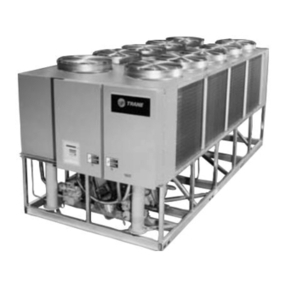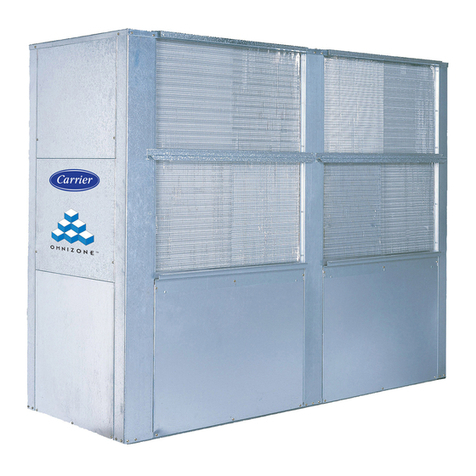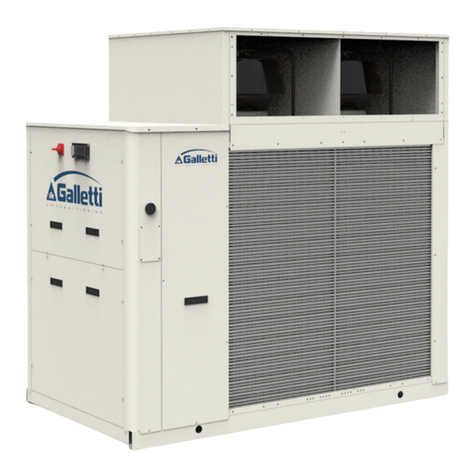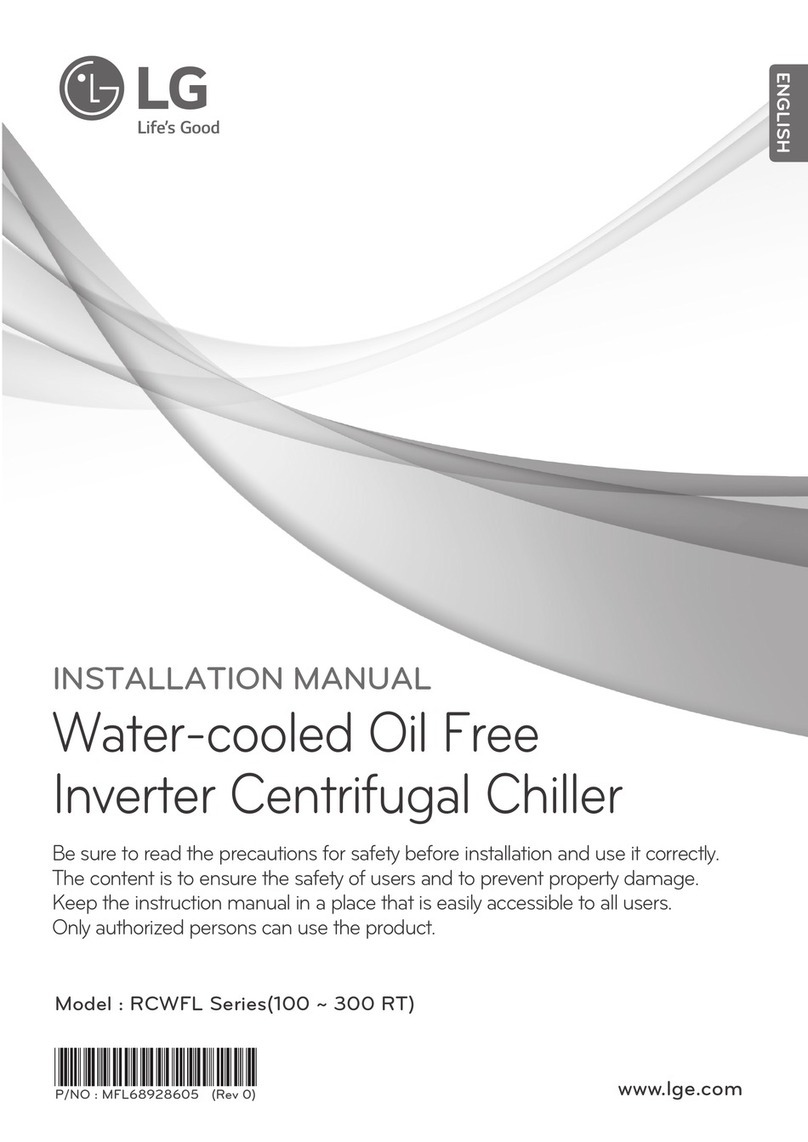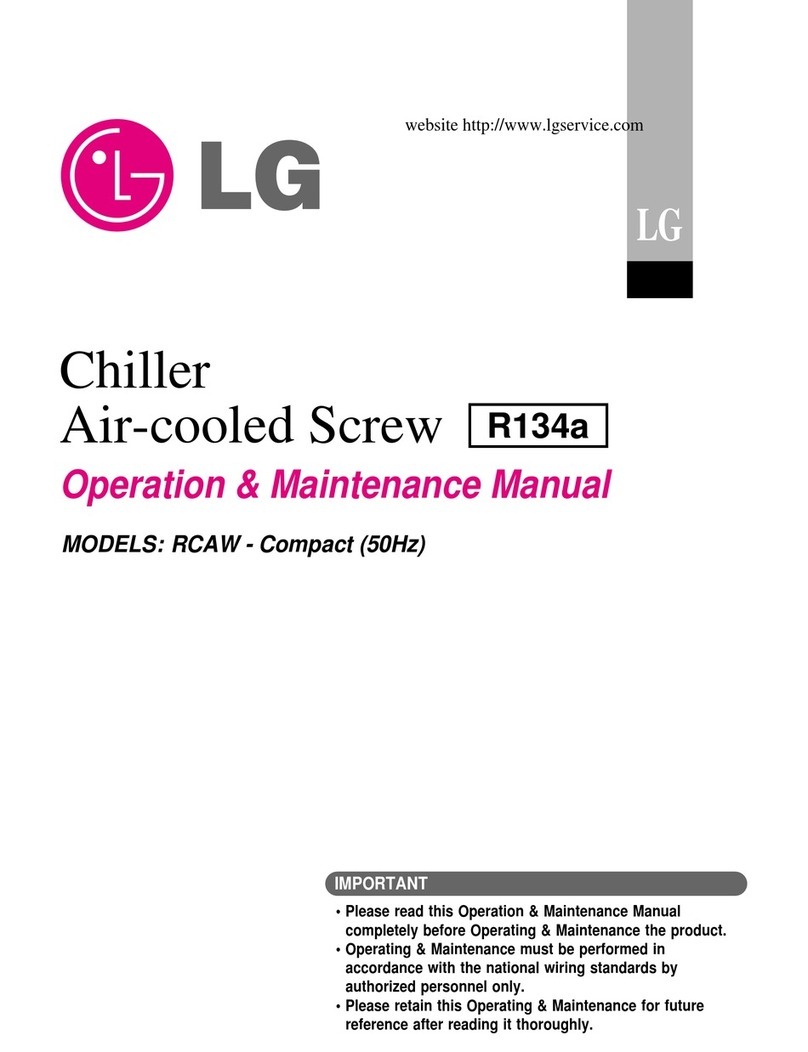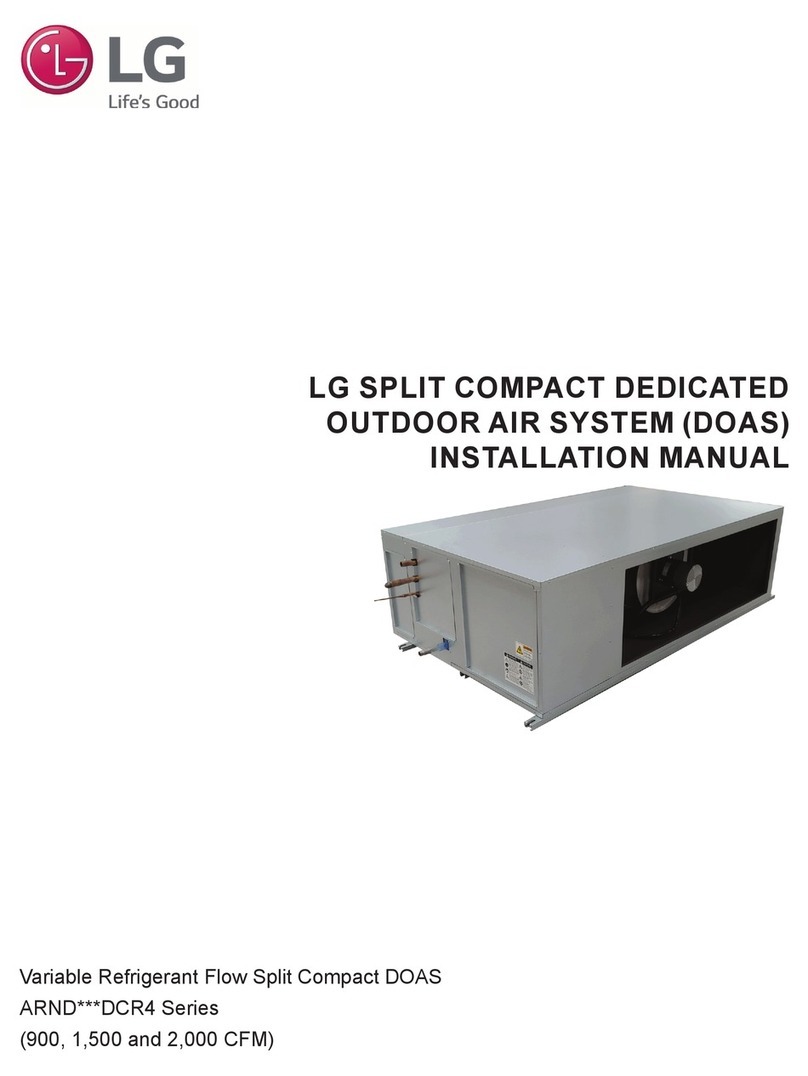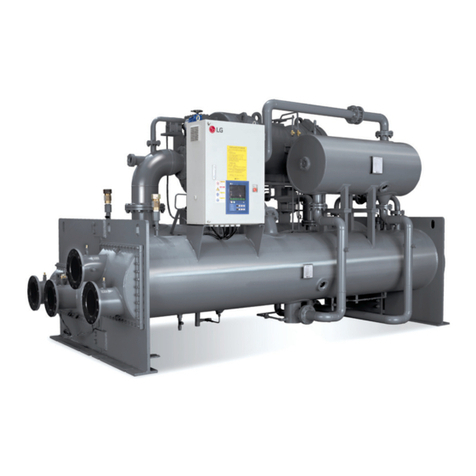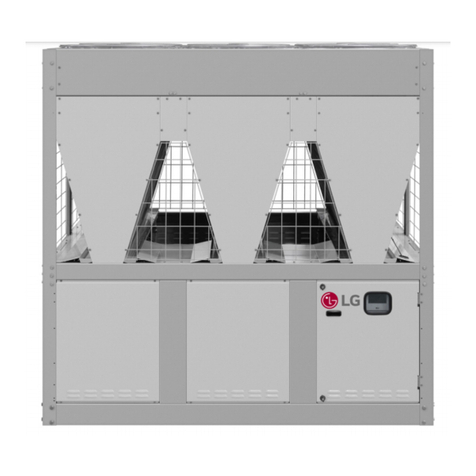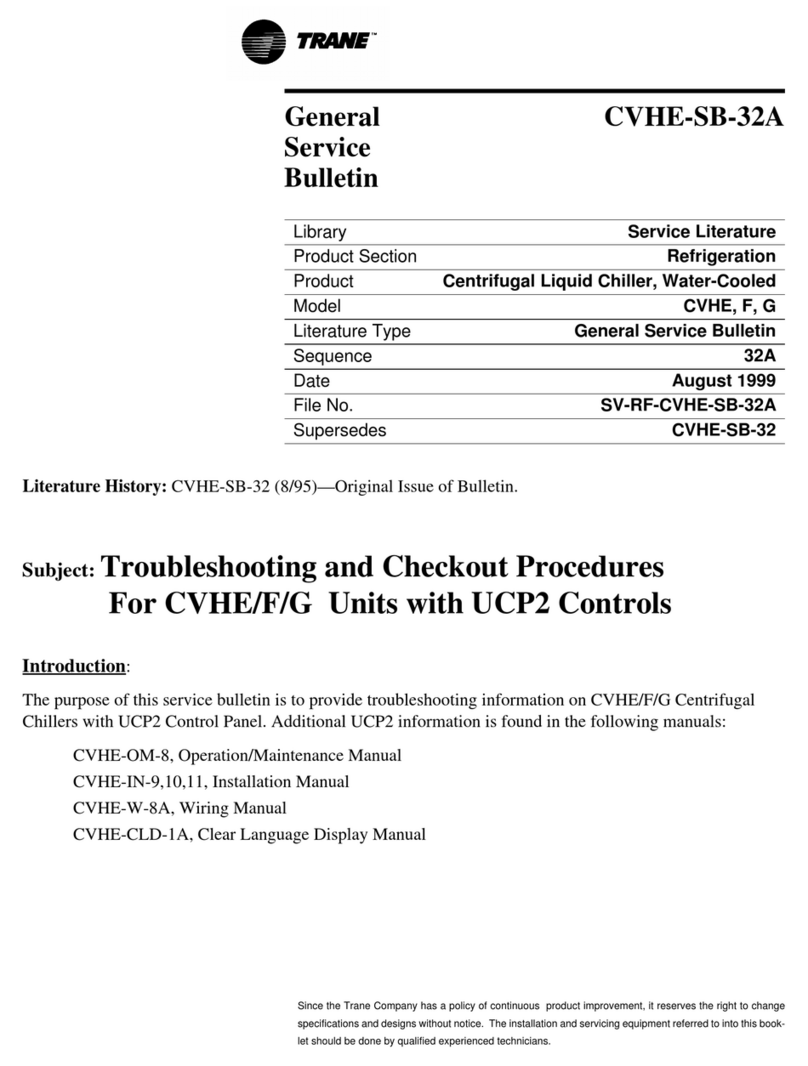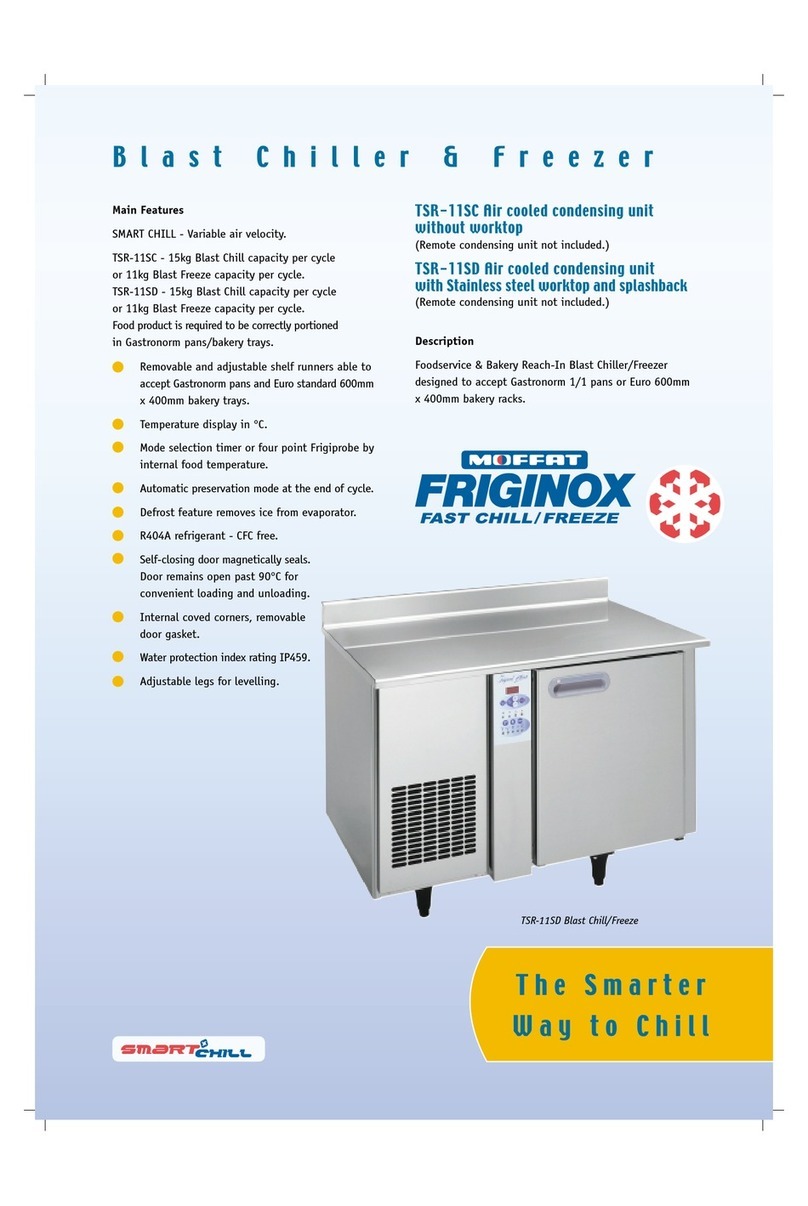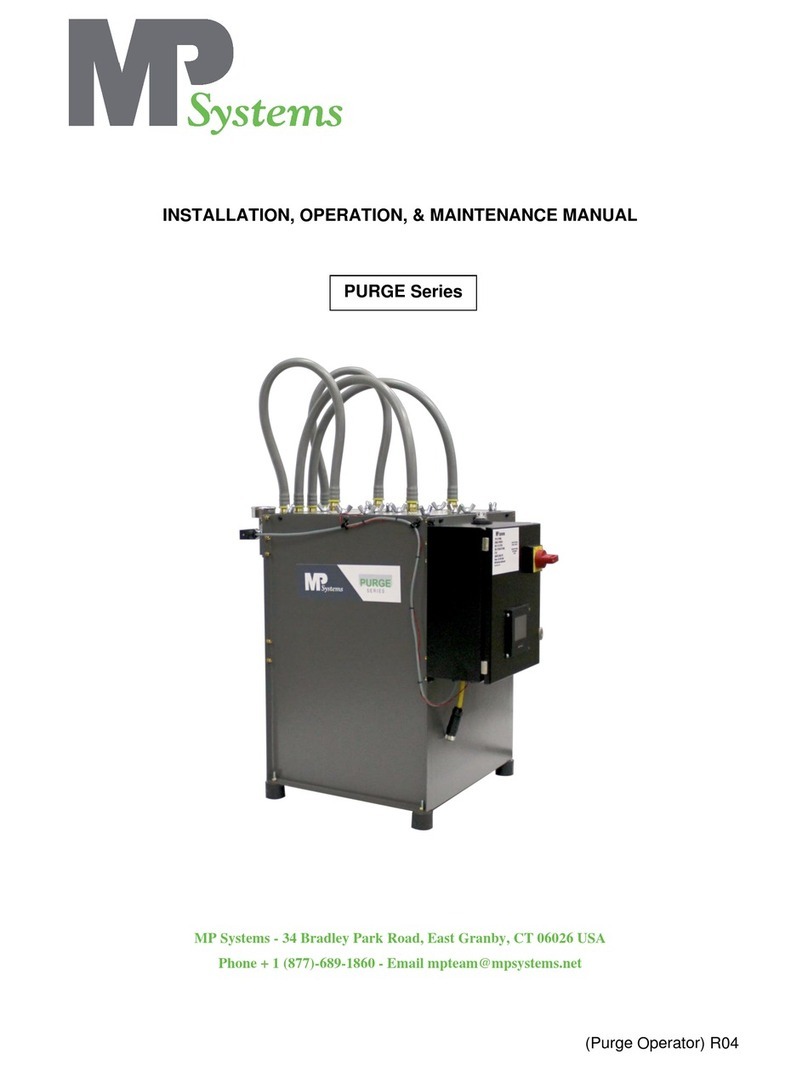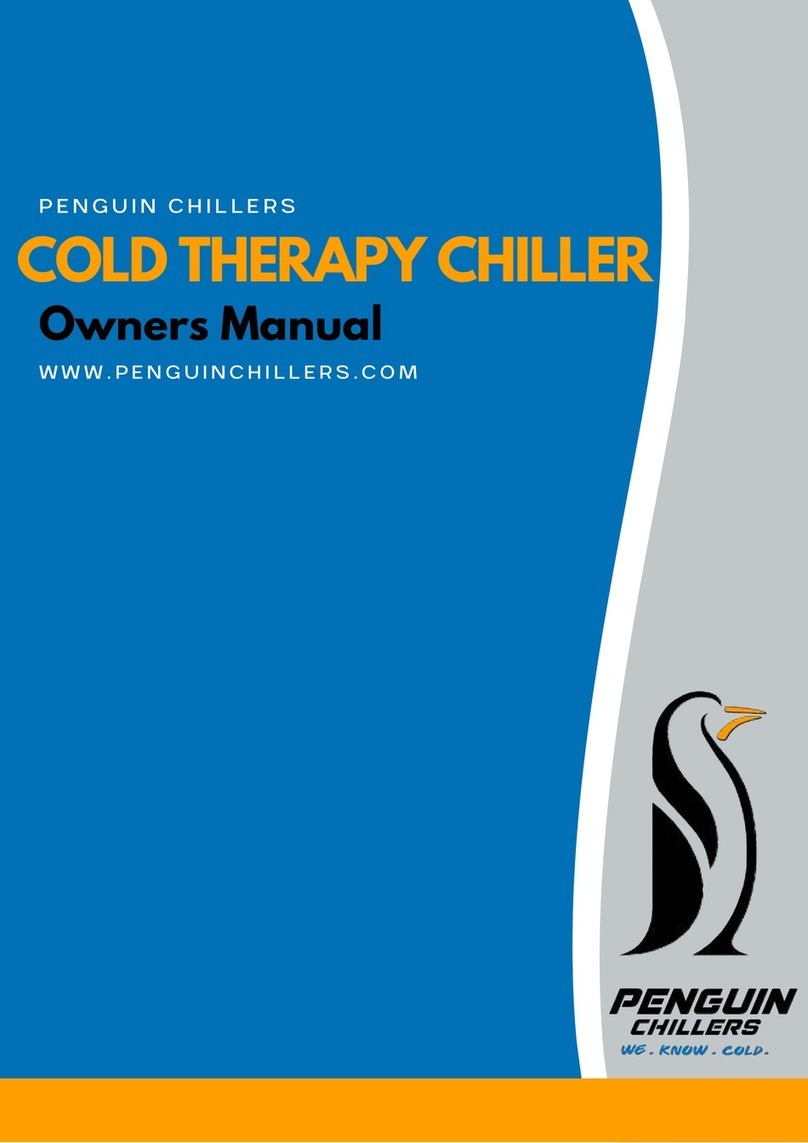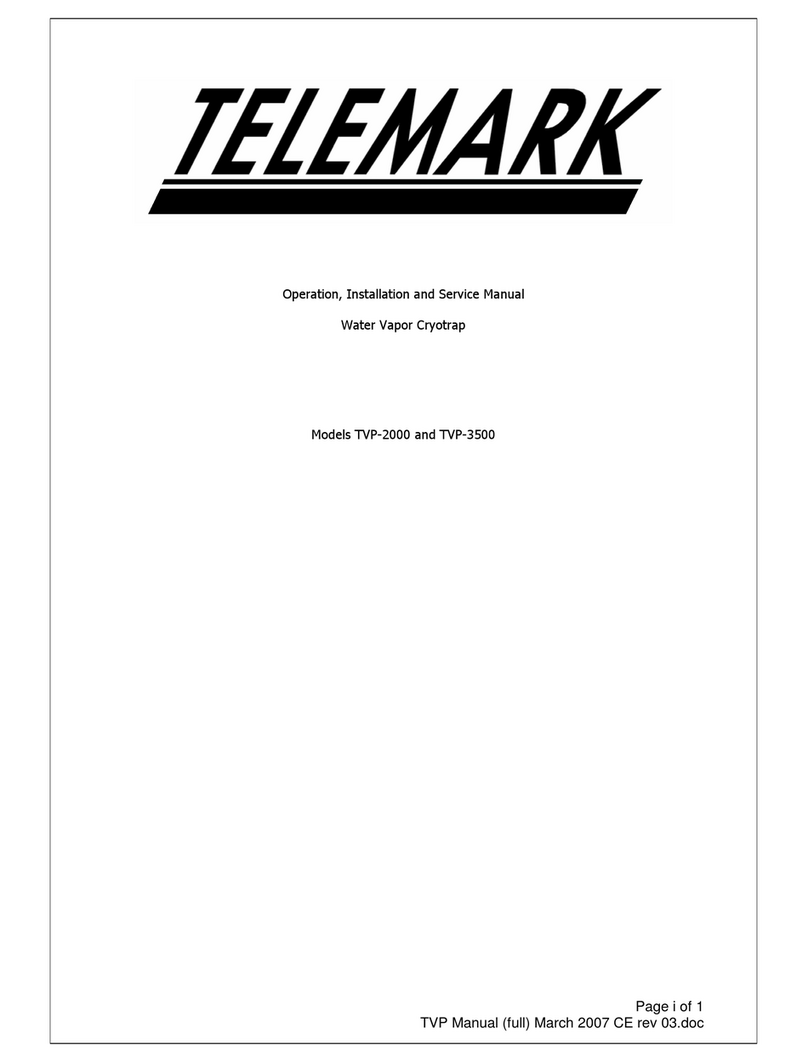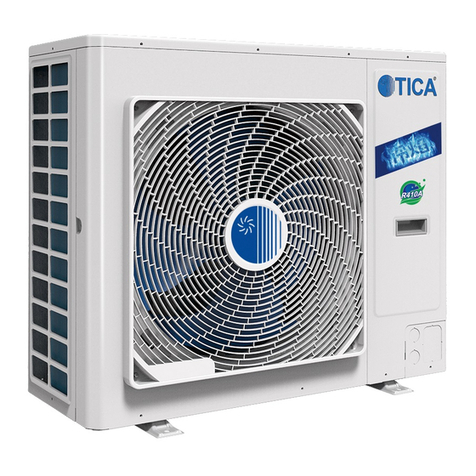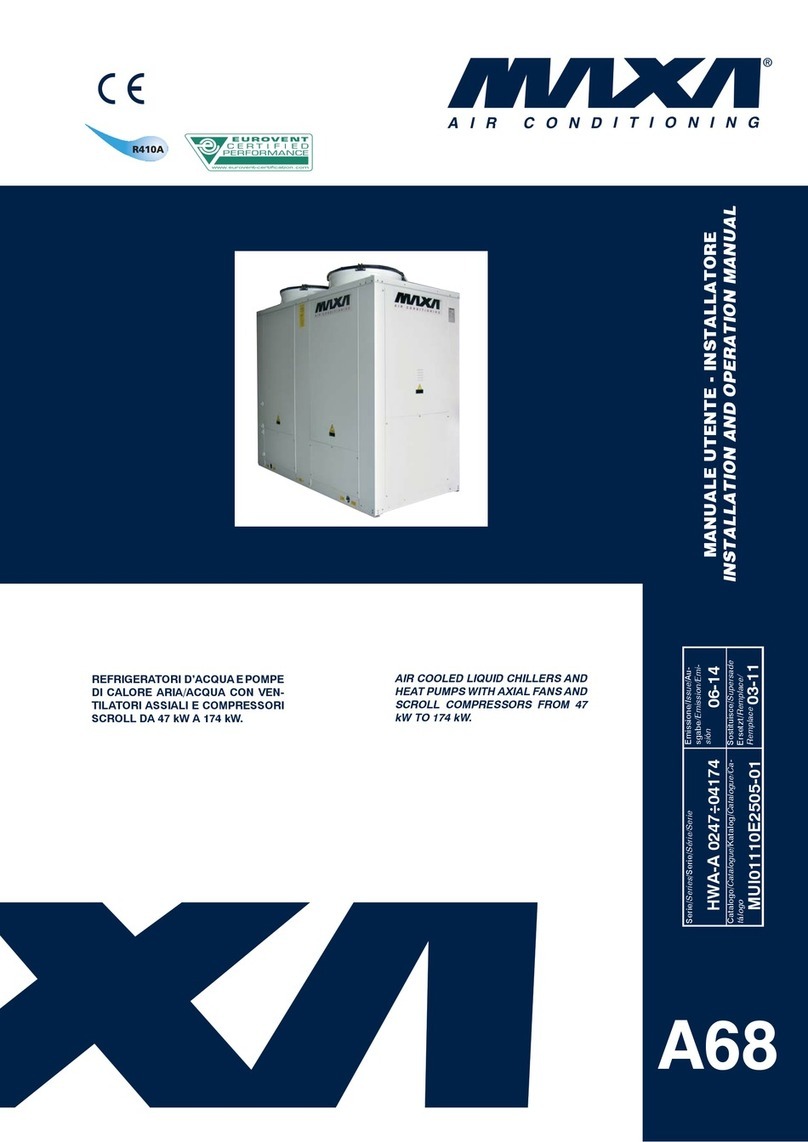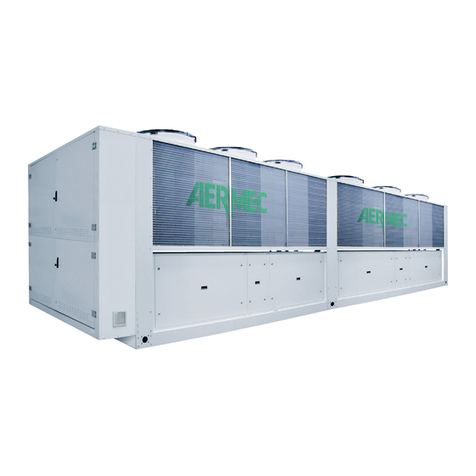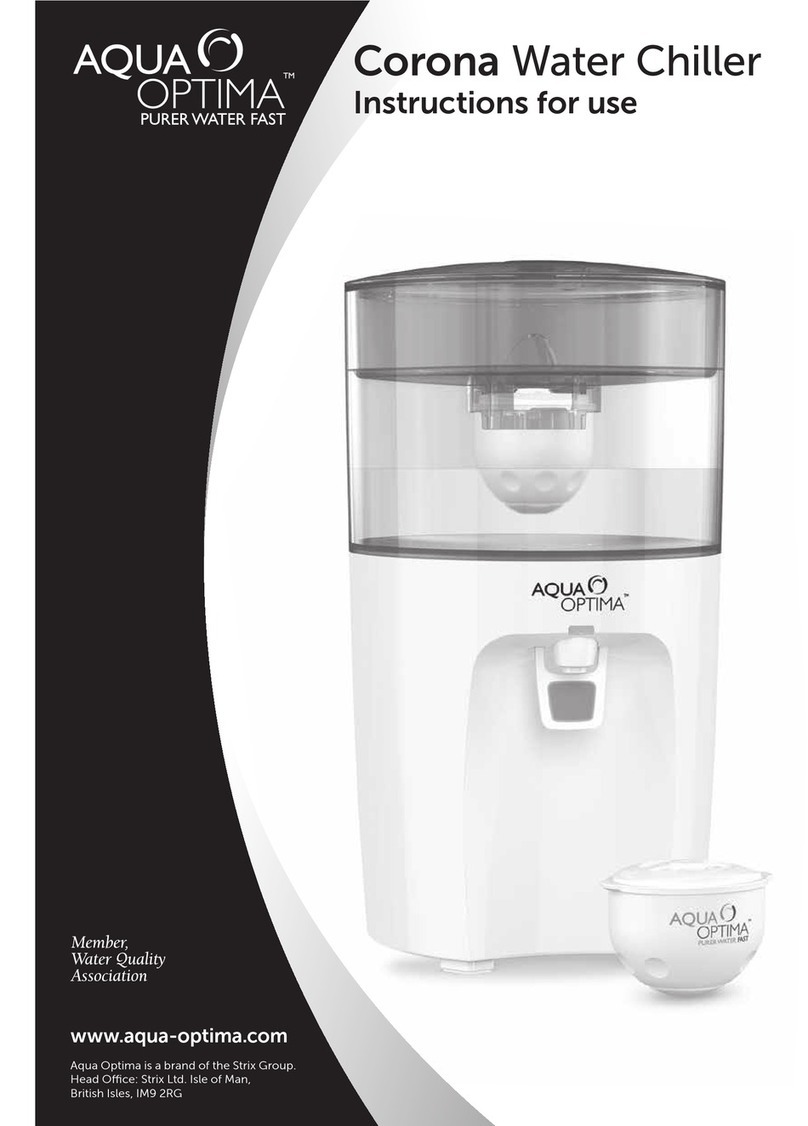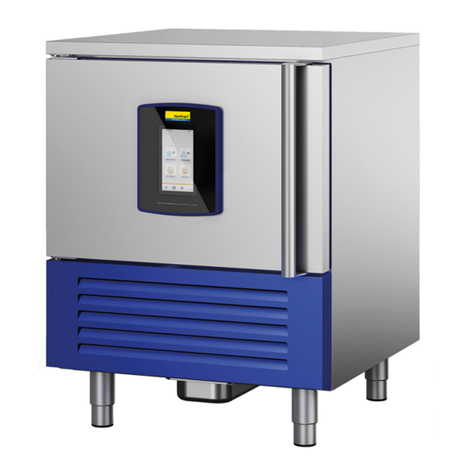1. CAUTIONS FOR SAFETY _ WARNING/CAUTION 5
• Do not vent refrigerant relief valves within a building.
-
Outlet from relief valves must be vented outdoors in accordance with the latest edition of ANSI/ASHRAE(American Na-
tional Standards Institute/American Society of Heating, Refrigeration and Air Conditioning Engineers) 15 (Safety Code for
Mechanical Refrigeration). The accumulation of refrigerant in an enclosed space can displace oxygen and cause asphyxi-
ation. Provide adequate ventilation in enclosed or low overhead areas. Inhalation of high concentrations of refrigerant
gas is harmful and may cause heart irregularities, unconsciousness or death. Misuse can be critical. Refrigerant gas is
heavier than air and reduces the level of oxygen. It can cause irritation to eyes and skin.
• Be careful of water leakage.
- In case of any water leakage in the pump or pipe, immediately stop operating the unit. It may cause electric
shock, electricity leakage or defects.
• Be careful of electric shock.
- Always ground the chiller during installation. It may cause electric shock.
• Do not leave refrigerant system open to air any longer than necessary.
- If the repair cannot be completed, seal the circuits to prevent any contamination or rust within the product, and
charge dry nitrogen.
• Do not reuse compressor oil.
- It can damage the product.
• During installation, make the specified grounding before supplying the power, and during the dismantling, remove
the grounding line at the end of the task.
• Use appropriate meters for measurement. Otherwise, it may cause injury or electric shock.
• Check all power connected to the control panel or starter panel to be shut off while applying the power.
- It may cause electric shock.
• Make sure to discharge the electric current before inspection or repair work.
- It may cause injury or electric shock.
• Do not open the 2nd phase side of the current transformer when power is on.
- High voltage could be discharged causing an electric shock.
• Remove foreign objects(working tools, wires, bolts, washers) after installation, inspection, and repair work.
- They may cause injury, fire, or damage.
• When using a condenser, make sure to verify the complete discharge before applying the power again. (Re-power-
ing within 5 min. is prohibited.)
- It may cause electric shock, fire, damage, or malfunction.
• Change the condenser in case that the expansion exceeds the recommended limit.
It may cause electric shock, fire, damage, or malfunction.
1-2. Caution
Operation & Maintenance
• Always check for gas(refrigerant) leakage after installation or repair of product.
- Low refrigerant levels may cause failure of product.
• Do not install the unit where combustible gas may leak.
- There is risk of fire or failure of product
• Keep level even when installing the product.
- Unleveled refrigerant can cause problems to the product.
•
Do not use the product for special usage or location such as preserving animal/plant, precision machine, artifact, etc.
- It may cause property damage.
• Use exclusive wire for the product. Use power cables of sufficient current carring capacity and rating.
- It may cause fire and electric shock.
•
When installing the unit in a hospital, communication station, or similar place, provide sufficient protection against noise.
- The inverter equipment, private power generator, high-frquency medical equipment, or radio communication
equipment may cause the chiller to operate erroreously, or fail to operate. On the other hand, the chiller may af-
fect such equipment by creating noise that disturbs medical treatment or image broadcasting.
• To protect the product from corrosion, do not install the product where it is exposed to sea wind(salt spray) directly.
If necessary, please install shield.
- It may cause product deformation and defects.
• Make the connections securely so that the outside force of the cable may not be applied to the termianls.
- Inadequate connetion and fastening may generate heat and cause fire. If the power cable got damaged, do not di-
rectly replace it, but call the service center for replacement first.
• Do not use the product in special environments.
- Oil, steam and sulfuric steam can deteriorate the product performance or cause damage to the parts.
• Be careful when transporting the product.
- When carrying the chiller, always consult with the specialized expert. When transporting the chiller, always follow
the methods described in the manual. If not, it can cause overturn, fall etc.
ENGLISH
